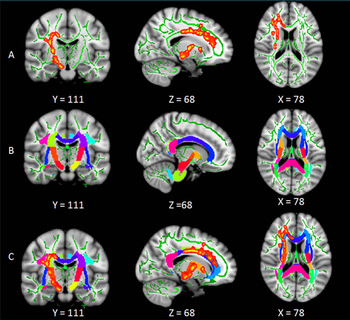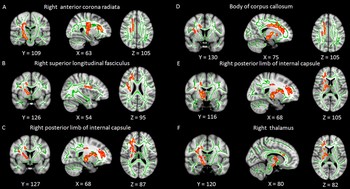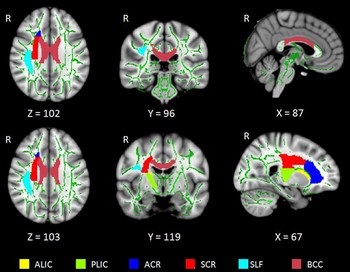Insomnia Linked to Damage in Brain Communication Network

White matter (WM) tracts related to regulation of sleep and wakefulness, and limbic cognitive and sensorimotor regions, are disrupted in the right brain in patients with primary insomnia. The reduced integrity of these WM tracts may be because of loss of myelination, according to new research published in the journal, Radiology.
Shumei Li, M.S., of Guangdong No. 2 Provincial People’s Hospital in Guangzhou, China, and colleagues compared changes in diffusion parameters of WM tracts from 23 primary insomnia patients and 30 healthy control (HC) participants, and the accuracy of these changes in distinguishing insomnia patients from HC participants was evaluated.
Primary insomnia patients had lower fractional anisotropy (FA) values mainly in the right anterior limb of the internal capsule, right posterior limb of the internal capsule, right anterior corona radiata, right superior corona radiata, right superior longitudinal fasciculus, body of the corpus callosum, and right thalamus.
“Our study suggests that primary insomnia is characterized by altered structural connectivity related to regulation of sleep and wakefulness, particularly involving limbic cognitive function and sensorimotor regions,” the authors write.



Web Extras
- Access the study, "Reduced Integrity of Right Lateralized White Matter in Patients with Primary Insomnia: A Diffusion-Tensor Imaging Study," at http://pubs.rsna.org/doi/full/10.1148/radiol.2016152038